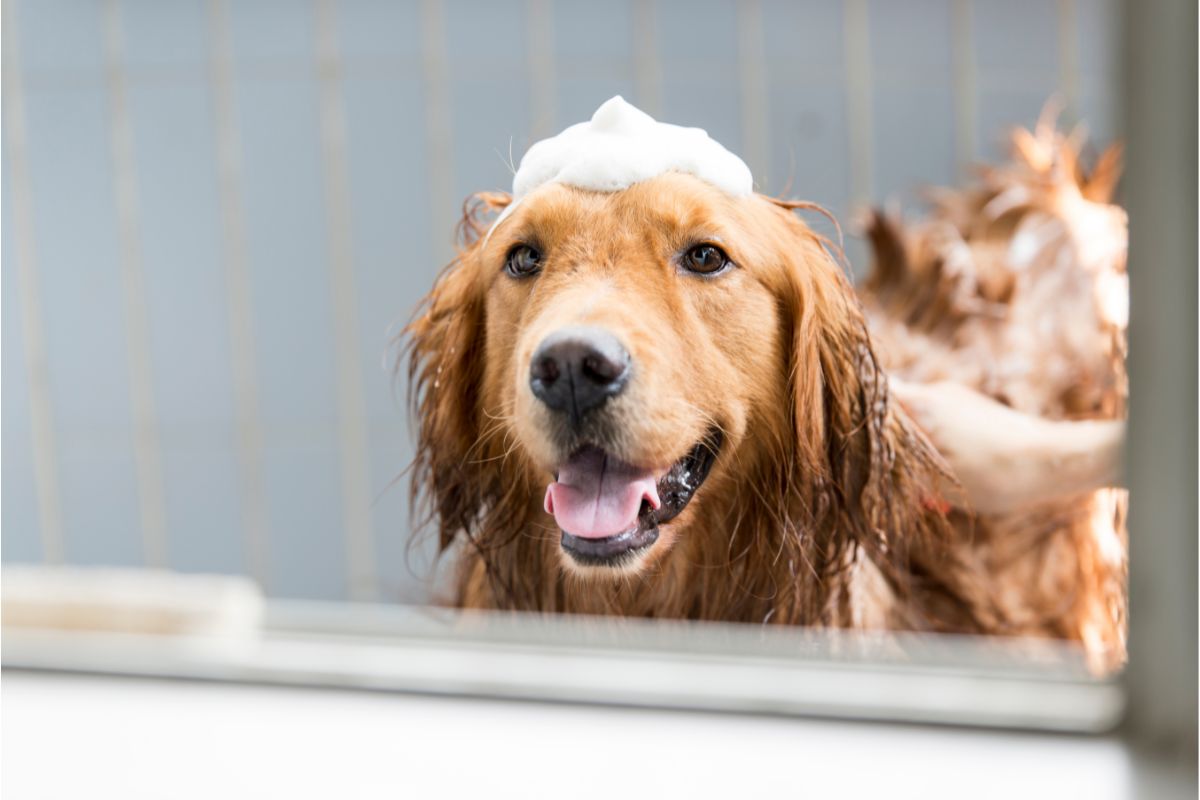As devoted dog owners, our primary concern is our furry companions’ well-being.
This concern skyrockets when our dogs go through pregnancy and whelping, as there are a lot of issues and complications that can arise during this time.
One of the more dangerous things you need to watch for in your whelping dog is milk fever, which is a potentially life-threatening complication.

But what is milk fever, what are the symptoms, and how can you avoid it?
In this article, we’ll explore this condition further, sharing its causes and the crucial steps you need to take if you suspect your dog might be affected.
Stay with us as we navigate the facts about milk fever, arming you with the knowledge to safeguard your beloved pet’s health and happiness.
So, What Is Milk Fever?
Medically termed hypocalcemia, milk fever in dogs results from a sudden drop in blood calcium, often affecting nursing mothers. This deficiency can lead to muscle spasms, weakness, and even seizures in dogs.
While primarily associated with postpartum females, male and non-lactating females can also be at risk.
This ailment can affect dogs in the week leading up to giving birth or in the few weeks directly following birth whilst whelping.
What Causes Milk Fever?
There are a few things that can make a dog more susceptible to the excessive loss of calcium that causes milk fever.
One of the more common reasons a dog might experience milk fever is a non-balanced diet, particularly one lacking calcium.
Dogs with a large litter of puppies might also struggle to keep up with the calcium required to produce milk, or dogs with hormonal issues could also disrupt normal calcium levels.
Are Some Dogs More Likely To Develop Milk Fever?
Yes, there are definitely genetic predispositions to developing milk fever. The illness is more common in small dog breeds, particularly if they’re nursing a large litter.
If you have certain dog breeds, you should know they are more susceptible. Those most likely to be affected include Chihuahuas, English Setters, Miniature Pinschers, Shih-Tzus, and Miniature Poodles.
However, dogs can develop milk fever no matter what size they are.
As well as this, dogs who have previously had milk fever are more likely to experience it in any future litters, and if they’ve had any daughters, those dogs are also at high risk of developing milk fever.
Symptoms And Signs Of Milk Fever
Recognizing the symptoms and signs of milk fever is pivotal for a prompt response to ensure your dog’s health.
The initial, subtle indications may include a sudden loss of appetite, restlessness, drooling, and stiff movements, or tetany.
The symptoms can quickly progress to more worrying signs such as vomiting, loss of coordination, tremors, seizures, hyperthermia, and even heat stroke in severe cases.
It’s important to know that the symptoms of milk fever can become life-threatening in under an hour if treatment isn’t sought after.
It’s really important to be vigilant, especially if your dog recently gave birth; milk fever typically occurs within the first three days postpartum.
Keep a keen eye on any changes in behavior or physical condition. If you notice these red flags, don’t hesitate to contact your veterinarian immediately.
How To Treat Milk Fever
If you’ve spotted the signs of milk fever, you must get your dog to see a vet as soon as possible, as the condition can escalate rapidly.
Once at the vet, they can diagnose milk fever with a blood test and, depending on the severity of the case, begin an intravenous course of calcium and fluids to bring the fever down and treat shock and dehydration.
Once the immediate danger has passed, you will probably be sent home with some oral calcium supplements to continue to take at home.
It is possible that you will have to bottle-feed the puppies whilst the mother recovers to avoid adding unnecessary stress to her while she gets better.
Milk fever is treatable but can cause long-term neurological or muscular complications if not recognized or treated quickly.

How To Prevent Milk Fever
Making sure your dog eats a well-balanced diet is vital to their overall health, but when they’re pregnant, you must speak to a vet about the different nutritional requirements your dog might have.
A lot of vets recommend feeding mumma dogs a high-quality puppy food diet whilst they’re lactating in order to provide adequate calcium.
Though you might think otherwise, you shouldn’t give your dog calcium supplements during her pregnancy as it stops the body from recognizing that their blood calcium levels are low.
Another popular option in supporting your dog and preventing milk fever is to bottle-feed her puppies during parts of the day to give her body enough time to replenish calcium. However, we would strongly recommend speaking to your vet before deciding to bottle-feed the pups.
The Final Woof
Milk fever is a scary and potentially life-threatening illness that can escalate quickly and have long-term health complications.
However, you can protect your dog and her litter with prompt intervention and proper medical attention.
You can do things to reduce the risk of milk fever, such as ensuring they’re on a calcium-rich diet during their pregnancy and while whelping. And, if your vet agrees, you can give mom a break from nursing every so often and support her by bottle-feeding the pups yourself.
However, some dogs are genetically predisposed to experience milk fever, and so sometimes, all you can do is be vigilant and make sure that they get the treatment they need when they need it.
Frequently Asked Questions
If you start to notice any signs of milk fever, it is recommended that you contact a vet straight away. The symptoms can turn life-threatening in under an hour, so you don’t want to risk any treatments that would prolong you taking your dog to the vet.
Pregnant dogs are susceptible to milk fever at any time but particularly during the last week of gestation and the first couple weeks of nursing.








